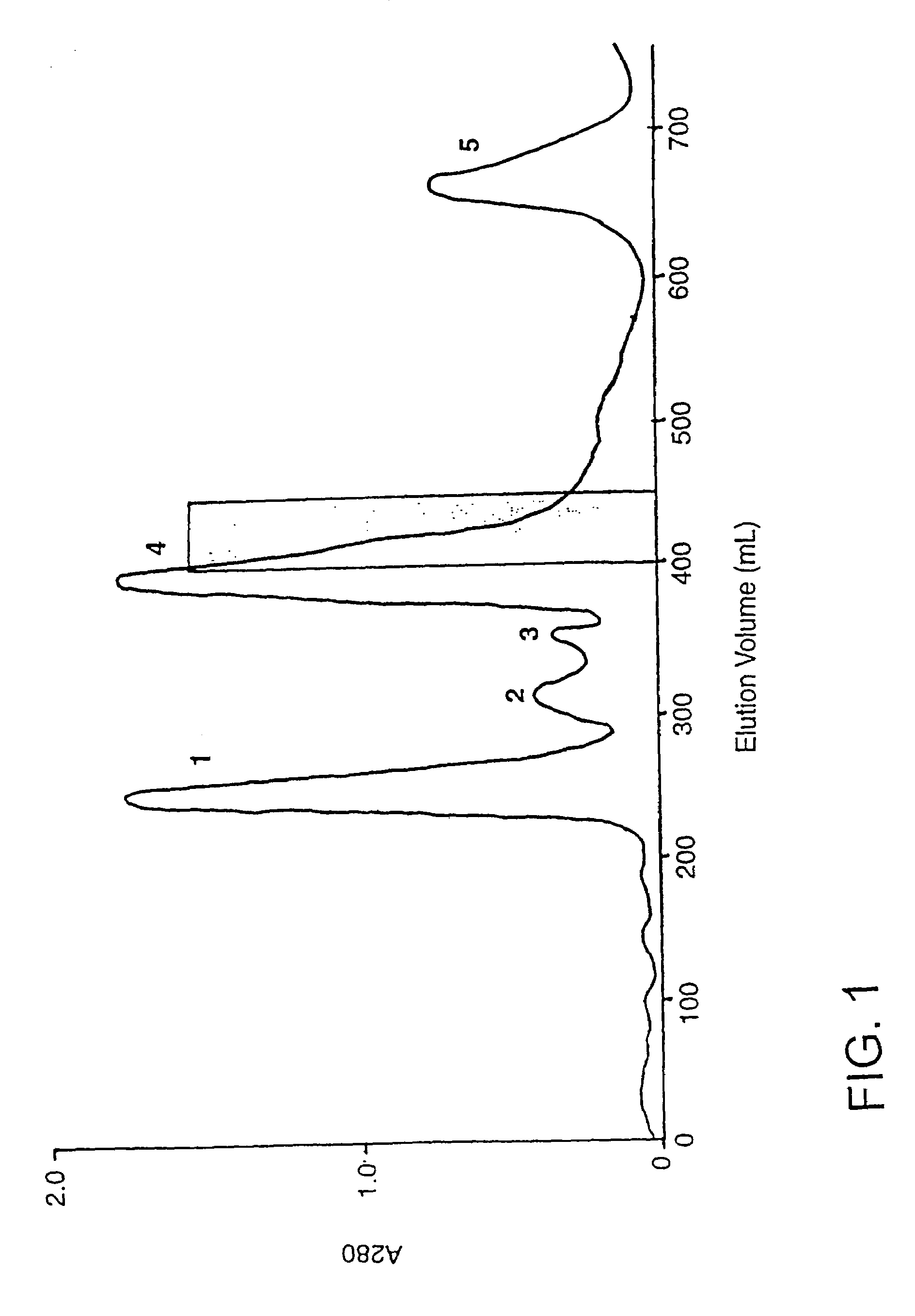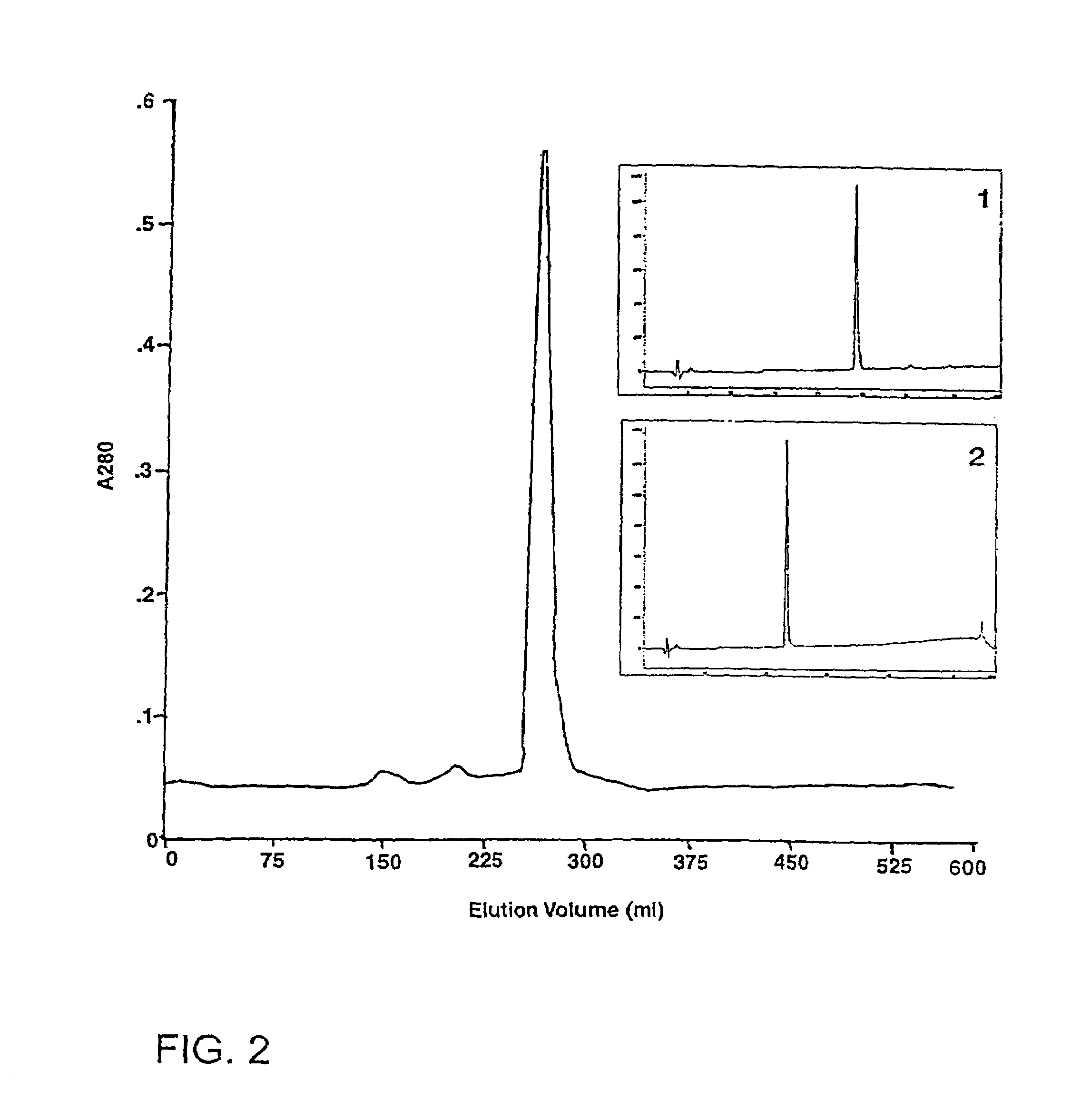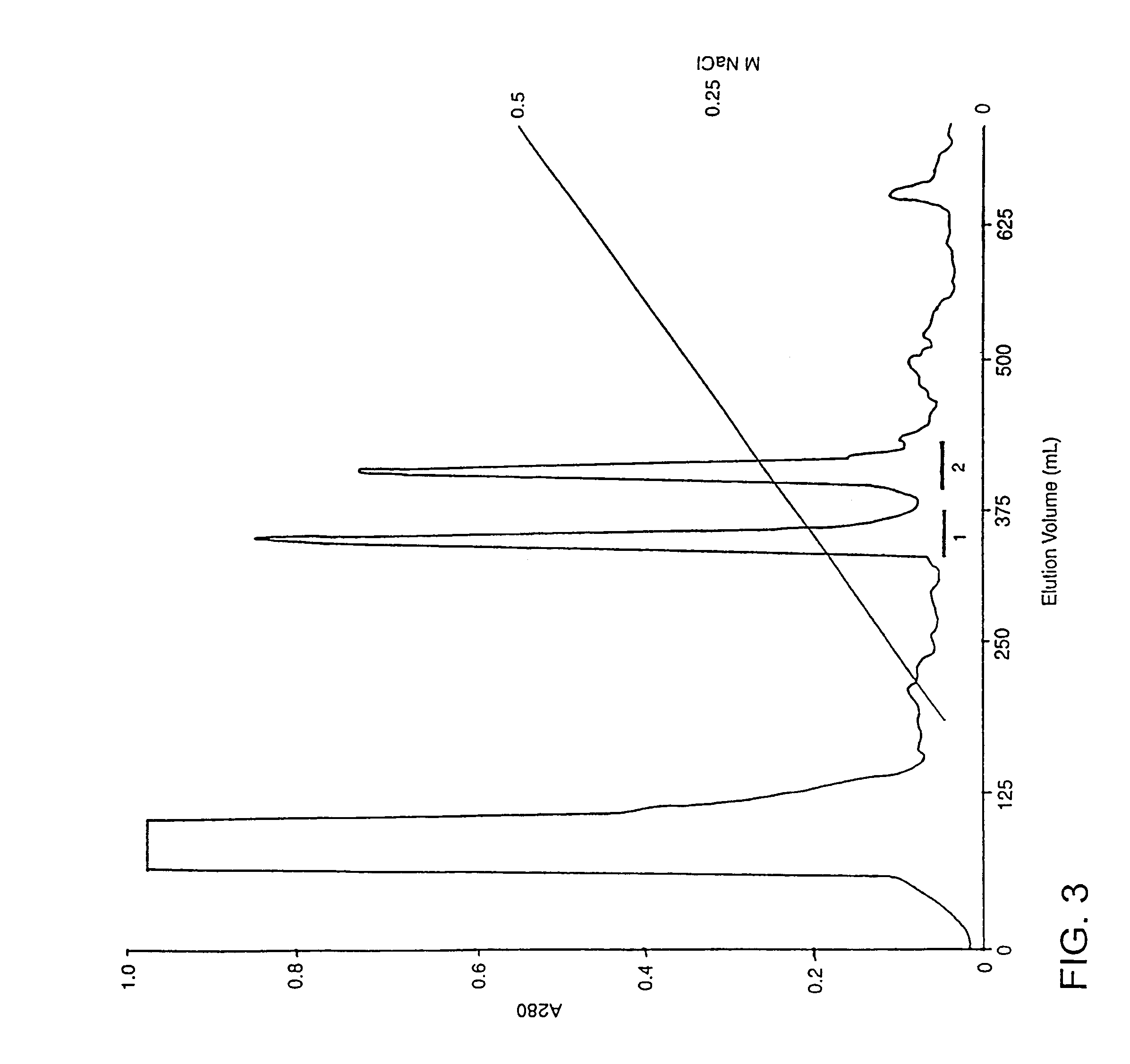Plasmin inhibitors from the australian brown snake Pseudonaja textilis textilis
a technology of plasmin inhibitors and brown snakes, which is applied in the field of antifibrinolytic agents, can solve problems such as anxiety generation, and achieve the effects of inhibiting blood loss, less efficient, and high enzyme specificity
- Summary
- Abstract
- Description
- Claims
- Application Information
AI Technical Summary
Benefits of technology
Problems solved by technology
Method used
Image
Examples
example 1
Characterization of Two Plasmin Inhibitors from Pseudonaja Textilis Textilis which Inhibit Bleeding in an Animal Model
[0211]Materials and Methods
Materials
[0212]Pooled lyophilised P textilis venom was obtained from Mr Peter Mirtschin, Venom Supplies, Tanunda, South Australia. Venom was reconstituted in 0.05 M tris-HCl buffer pH 7.4, at 10 mg / ml and the solution was centrifuged (2,000 g for 30 min) before chromatography or analysis. Sephacryl S-300, Sephacryl S-100, con A-Sepharose and DEAE-Sepharose CL-6B were obtained from Pharmacia Uppsala, Sweden, and the synthetic chromogenic substrate S-2251 was from Chromogenix, Mölndal, Sweden. A highly purified plasmin from Sanofi / Choay Laboratories (Paris) was used for some kinetic experiments. All other buffers and reagents were Analar grade.
Preparation of Plasminogen and Plasmin
[0213]Human plasminogen was purified from outdated pooled citrated plasma using the affinity chromatography procedure described elsewhere (Deutsch and Mertz. 1970, ...
example 2
Cloning and Sequencing of Textilinin cDNA
[0243]Materials and Methods
Materials
[0244]Common Brown Snake venom glands were obtained from reptiles deemed to be destroyed, having clinical conditions, which could not be treated. Venom glands were surgically taken, under sterile conditions, immediately after the animals were euthanized by a lethal dose of pentobarbitone (60 mg / Kg). Department of Environment and Heritage as well as the University of Queensland Animal Ethics committee approved the termination of these reptiles. Two excised venom glands (approximately 100 mg of wet tissue) were immediately frozen in liquid nitrogen and stored at −70° C. until ready for total RNA extraction.
Degenerate Primers
[0245]
Masci-3 (sense) ATGAARGAYAGRCCHGARYTNGAR [SEQID NO:27];Masci-5 (antisense) GTRCTYTCRTGYTCYTCY [SEQ IDNO:28];
Isolation of Total RNA
[0246]Total RNA was isolated using the Dynal Bead total RNA extraction kit. Frozen venom glands (2) were placed in 1.0 mL of lysis buffer (supplied in the...
example 3
Production of a Fibrin-Specific Monoclonal Antibody-Textilinin 1 Conjugate
[0295]A fibrin specific monoclonal antibody, MAb 12B3.B10 (IgG2A / kappa) (Tymkewycz et al, 1993, supra), will be chemically conjugated with the plasmin inhibitor Txln 1 by a two step zero length crosslinking procedure according to Grabarek and Gergely (1990, Anal. Biochem. 185:131–135). Briefly Txln 1 will be incubated with a water soluble carbodiimide (EDC) in the presence of N-Hydroxysuccinimide (sulfo-NHS), and will result in the conversion of the carboxyl groups of Glu or Asp into succinimidyl esters. After removing excess EDC by gel filtration MAb 12B3.B10 will be added to the activated Txln 1. Crosslinking will result from nucleophilic substitution of the lysine-amino groups of the IgG for the succinimidyl moieties during a 2h incubation. The IgG-Txln 1 conjugate will then purified from free Txln 1 via size exclusion HPLC on a Superdex 200 HR 10 / 30 column as described by Raut and Gaffney (1996, Fibrinolys...
PUM
| Property | Measurement | Unit |
|---|---|---|
| Fraction | aaaaa | aaaaa |
| Fraction | aaaaa | aaaaa |
| Fraction | aaaaa | aaaaa |
Abstract
Description
Claims
Application Information
 Login to View More
Login to View More - R&D
- Intellectual Property
- Life Sciences
- Materials
- Tech Scout
- Unparalleled Data Quality
- Higher Quality Content
- 60% Fewer Hallucinations
Browse by: Latest US Patents, China's latest patents, Technical Efficacy Thesaurus, Application Domain, Technology Topic, Popular Technical Reports.
© 2025 PatSnap. All rights reserved.Legal|Privacy policy|Modern Slavery Act Transparency Statement|Sitemap|About US| Contact US: help@patsnap.com



